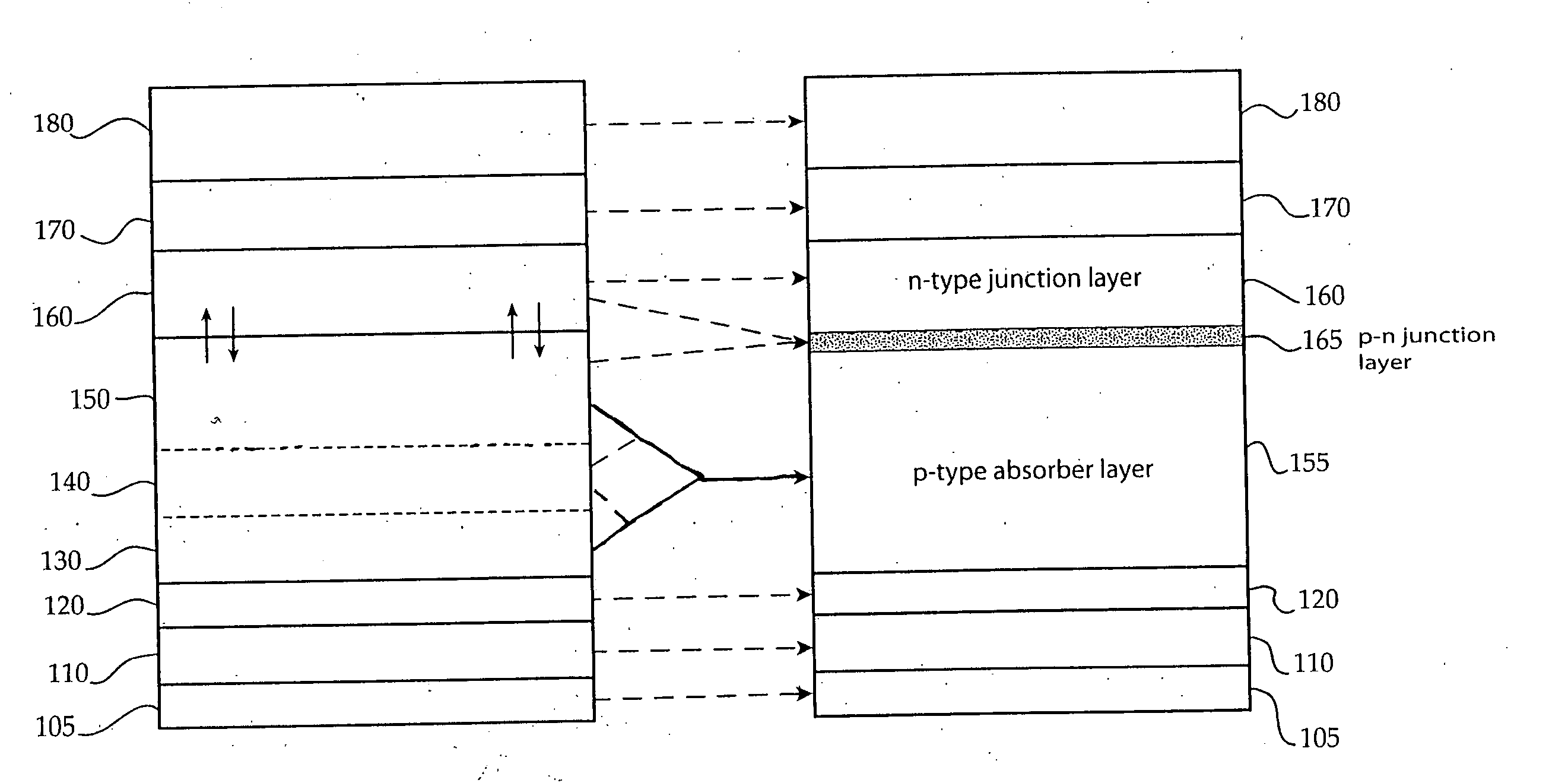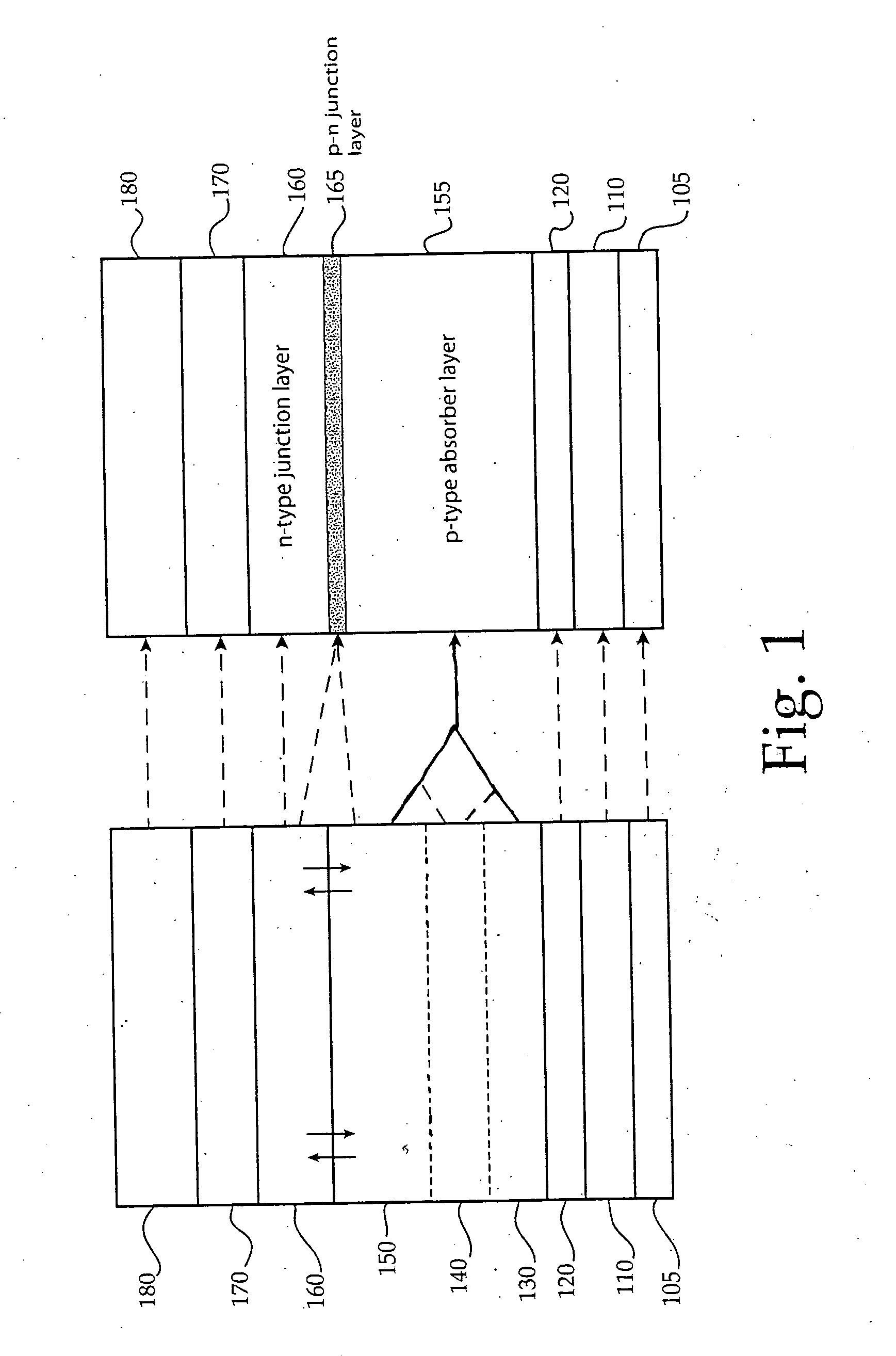Thermal process for creation of an in-situ junction layer in CIGS
a technology of in-situ junction layer and solar cell, which is applied in the field of photovoltaics, can solve the problems of difficult commercial scale of these processes, inability of pv cells to effectively replace traditional energy sources in the market, and efficient thin-film manufacturing process, and achieve the effect of reducing the temperature of the substra
- Summary
- Abstract
- Description
- Claims
- Application Information
AI Technical Summary
Benefits of technology
Problems solved by technology
Method used
Image
Examples
Embodiment Construction
[0011] Chalcopyrite ternary thin films of copper-indium-diselenide (CuInSe2) and copper-indium-gallium-diselenide (CuIn1-x Gax Se2), both of which are generically referred to as Cu(In, Ga)Se2, or CIGS, have become the subject of considerable interest and study for semiconductor devices in recent years. Sulfur can also be, and sometimes is, substituted for selenium, so the compound is sometimes also referred to even more generically as Cu(In,Ga)(Se, S)2 so as to encompass all of these possible combinations. These devices are also referred to as I-III-VI2 devices according to their constituent elemental groups. These devices are of particular interest for photovoltaic device or solar cell absorber applications. For photovoltaic applications, the p-type CIGS layer is combined with an n-type CdS layer to form a p-n heterojunction CIGS / CdS device.
[0012] The direct energy gap of CIGS results in a large optical absorption coefficient, which in turn permits the use of thin layers on the or...
PUM
| Property | Measurement | Unit |
|---|---|---|
| temperature | aaaaa | aaaaa |
| thickness | aaaaa | aaaaa |
| temperature | aaaaa | aaaaa |
Abstract
Description
Claims
Application Information
 Login to View More
Login to View More - R&D
- Intellectual Property
- Life Sciences
- Materials
- Tech Scout
- Unparalleled Data Quality
- Higher Quality Content
- 60% Fewer Hallucinations
Browse by: Latest US Patents, China's latest patents, Technical Efficacy Thesaurus, Application Domain, Technology Topic, Popular Technical Reports.
© 2025 PatSnap. All rights reserved.Legal|Privacy policy|Modern Slavery Act Transparency Statement|Sitemap|About US| Contact US: help@patsnap.com


